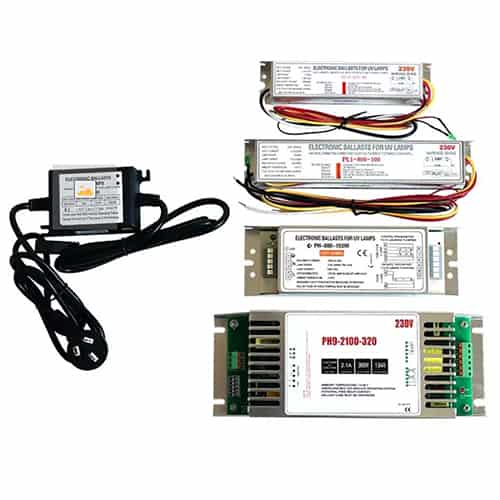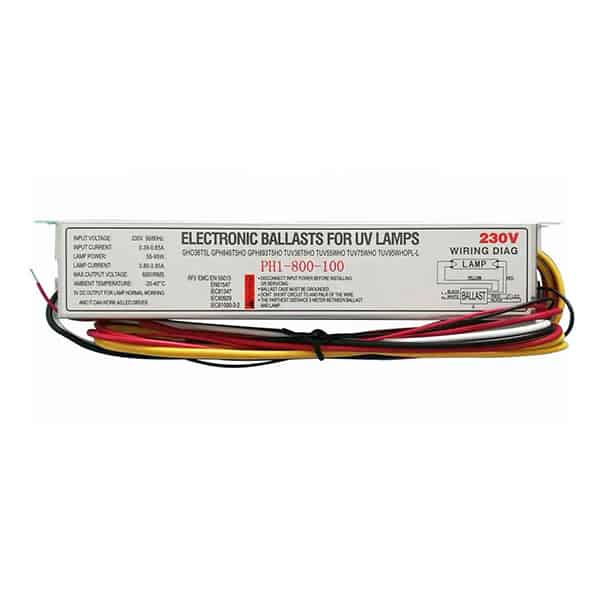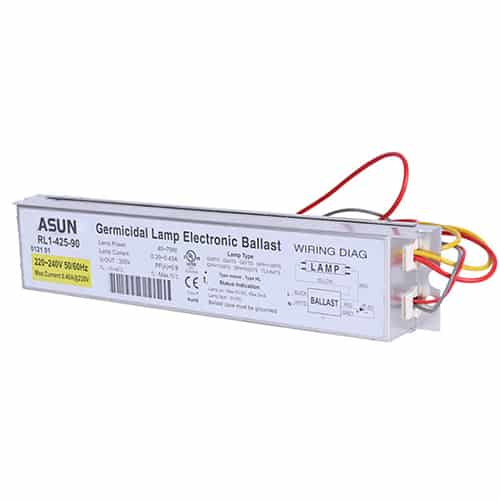Upgrading to LED lighting is a common goal for businesses and facilities seeking energy-efficient, long-lasting illumination. However, many are unsure if their existing electronic ballasts will be compatible with new LED lights, raising questions about the upgrade’s cost and feasibility. Understanding whether LED lights can work with existing electronic ballasts—and which types can—makes the transition smoother, saving both time and money in the process.
While most standard electronic ballasts are incompatible with LED lights, specific LED tube types, such as ballast-compatible (Type A) LEDs, are designed to work with them.
There are different types of LED tubes on the market, each with its own compatibility requirements. LED tubes fall into three main categories: Type A (ballast-compatible), Type B (ballast-bypass), and Type C (remote driver). Knowing which type best suits an existing ballast setup or whether bypassing the ballast altogether is the better option helps ensure a successful and efficient LED upgrade.
Understanding How Electronic Ballasts Function with Traditional Lighting
In traditional fluorescent lighting, an electronic ballast regulates the voltage and current, creating a stable and controlled environment for the light to operate. Ballasts act as both voltage regulators and power managers for fluorescent tubes, ensuring that they receive the correct amount of current to start and operate effectively. This is essential since fluorescent lamps require a high initial voltage to start but only need a low current to maintain steady operation.
However, LEDs are fundamentally different from fluorescents and operate on low direct current (DC) voltage. Instead of ballasts, LEDs typically require drivers, which control the flow of electricity to meet the lower, more consistent requirements of LED technology. This difference means that traditional ballasts are generally not necessary for LEDs, as LEDs are inherently designed to be more efficient without the voltage regulation needed by fluorescent systems.
LED Types Compatible with Electronic Ballasts
One category of LED tubes, known as Type A, is specifically designed to work with existing electronic ballasts. These ballast-compatible LEDs are plug-and-play options, which means they can be installed directly into the existing fixture without requiring any rewiring or modification. Type A LEDs are particularly beneficial for retrofits in which simplicity and minimal disruption are priorities, as they allow for an easy upgrade without the need to remove or bypass the ballast.
While Type A LEDs offer convenience, they come with limitations. They depend on the compatibility and quality of the existing ballast, which can affect performance. If the ballast is outdated or incompatible with Type A LEDs, it may lead to lower efficiency or reduced light output. Additionally, maintaining ballasts can lead to additional maintenance requirements over time, as the ballast itself may still need eventual replacement. For these reasons, many consider other LED types for longer-term, higher-efficiency solutions.
Ballast-Bypass LED Options (Type B LEDs)
Type B LED tubes are designed to connect directly to the power source, bypassing the ballast entirely. These ballast-bypass LEDs require minor rewiring, where the fixture’s ballast is removed, and the LED tube is connected to AC power. By eliminating the ballast, Type B LEDs improve efficiency and reduce maintenance costs since there is no need to replace or service the ballast.
The benefits of Type B LEDs extend beyond just cost savings. Without a ballast, the system experiences less energy loss, making it more efficient and reliable in the long term. However, installing Type B LEDs requires careful attention to safety, as they involve working directly with high-voltage AC wiring. To ensure proper installation, it’s often recommended to have a qualified electrician handle the rewiring process, as improper installation can lead to safety risks. Despite this added step, many facility managers prefer Type B LEDs for their simplicity and long-term benefits, especially in installations where ballasts are outdated or incompatible.
Remote Driver LED Solutions (Type C LEDs)
Type C LED tubes use a different approach by employing remote drivers, which replace the need for both ballasts and direct-to-AC connections. These remote drivers function similarly to LED drivers used in other lighting applications, delivering precise, low-voltage DC power to the LED tubes. This configuration provides excellent control over power delivery, enabling dimming options and compatibility with advanced lighting controls, such as occupancy sensors and timers.
Type C LEDs are particularly suitable for large-scale commercial or industrial installations where advanced control over lighting is desired. By separating the driver from the fixture, Type C LEDs allow for highly customized lighting setups and ensure each tube operates at optimal efficiency. Although Type C systems typically involve a higher upfront cost, they offer substantial benefits in energy savings, control, and versatility, making them ideal for environments where lighting flexibility and efficiency are top priorities.
Determining the Compatibility of Your Current Ballast with LEDs
To determine whether existing electronic ballasts are compatible with LED tubes, first identify the type of ballast in use and whether it meets the specifications required by Type A LED tubes. Most Type A LED tubes are compatible with specific electronic ballasts, but not all ballast models will work with these LED types. Compatibility information can typically be found in the LED manufacturer’s product specifications, which list supported ballast models. Ensuring compatibility beforehand helps avoid performance issues and maximizes the lifespan of the LED installation.
If your current ballast is incompatible or in poor condition, replacing or bypassing it might be more cost-effective. For installations where long-term efficiency is a priority, switching to Type B or Type C LEDs, which do not require ballasts, can offer better value. Assessing the specific needs of the space, the condition of existing ballasts, and your long-term goals will help determine the best LED type to use for the project.
Final Thoughts
Selecting the right LED type based on lamp ballast compatibility is essential for a smooth transition to LED lighting. Whether using Type A LEDs with existing ballasts or opting for Type B or Type C options that eliminate ballast requirements, understanding these choices helps achieve an efficient, cost-effective lighting upgrade.



